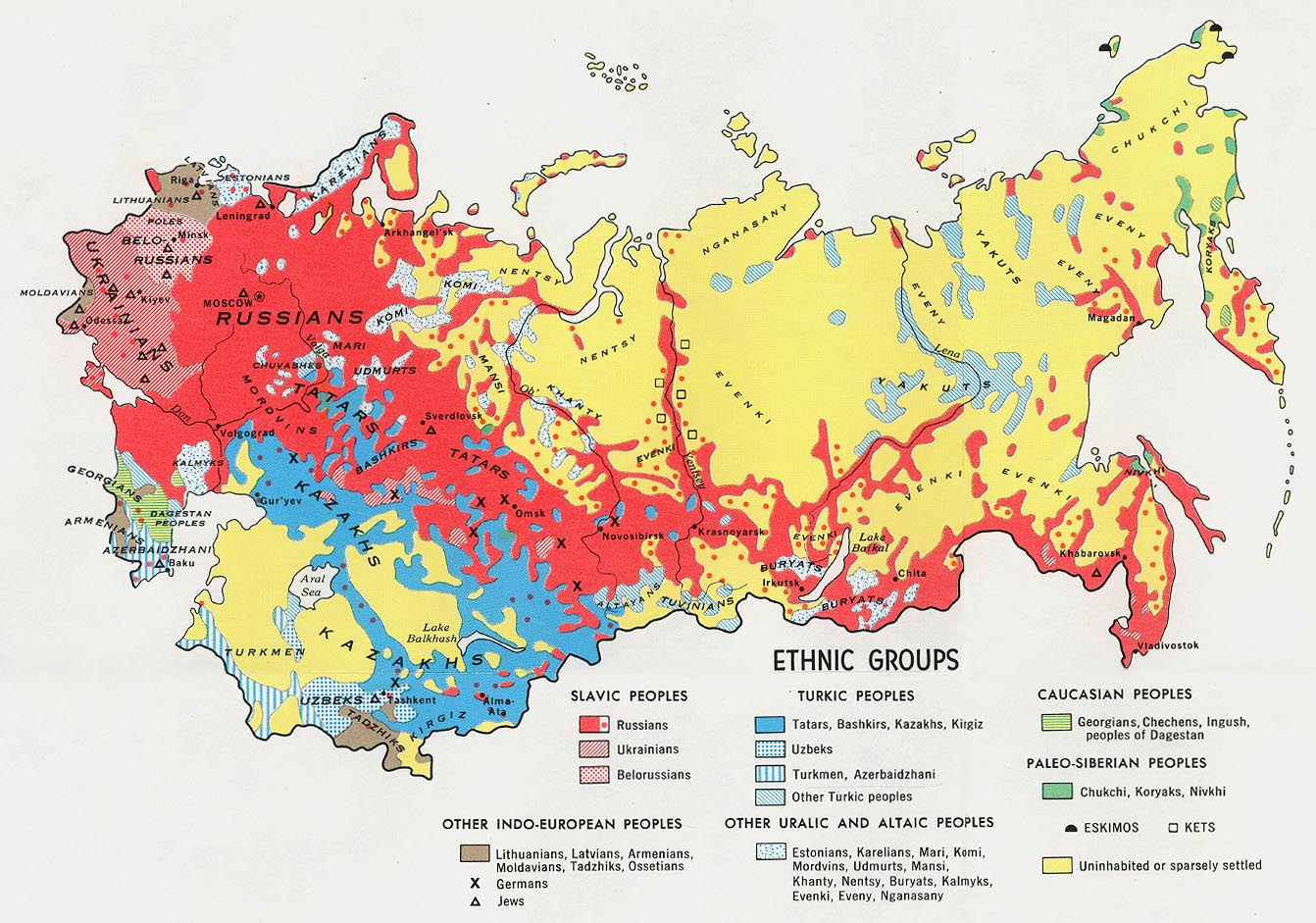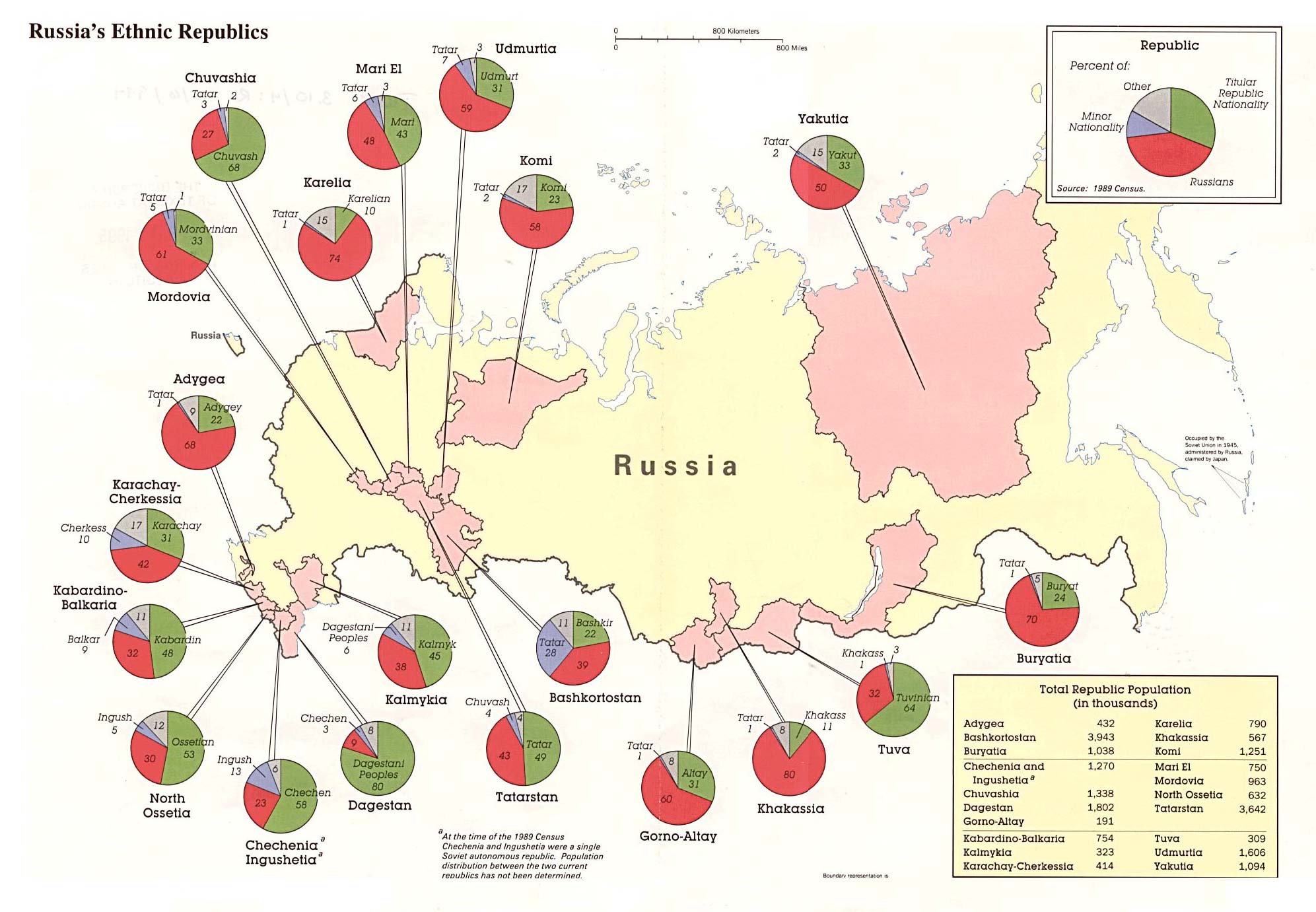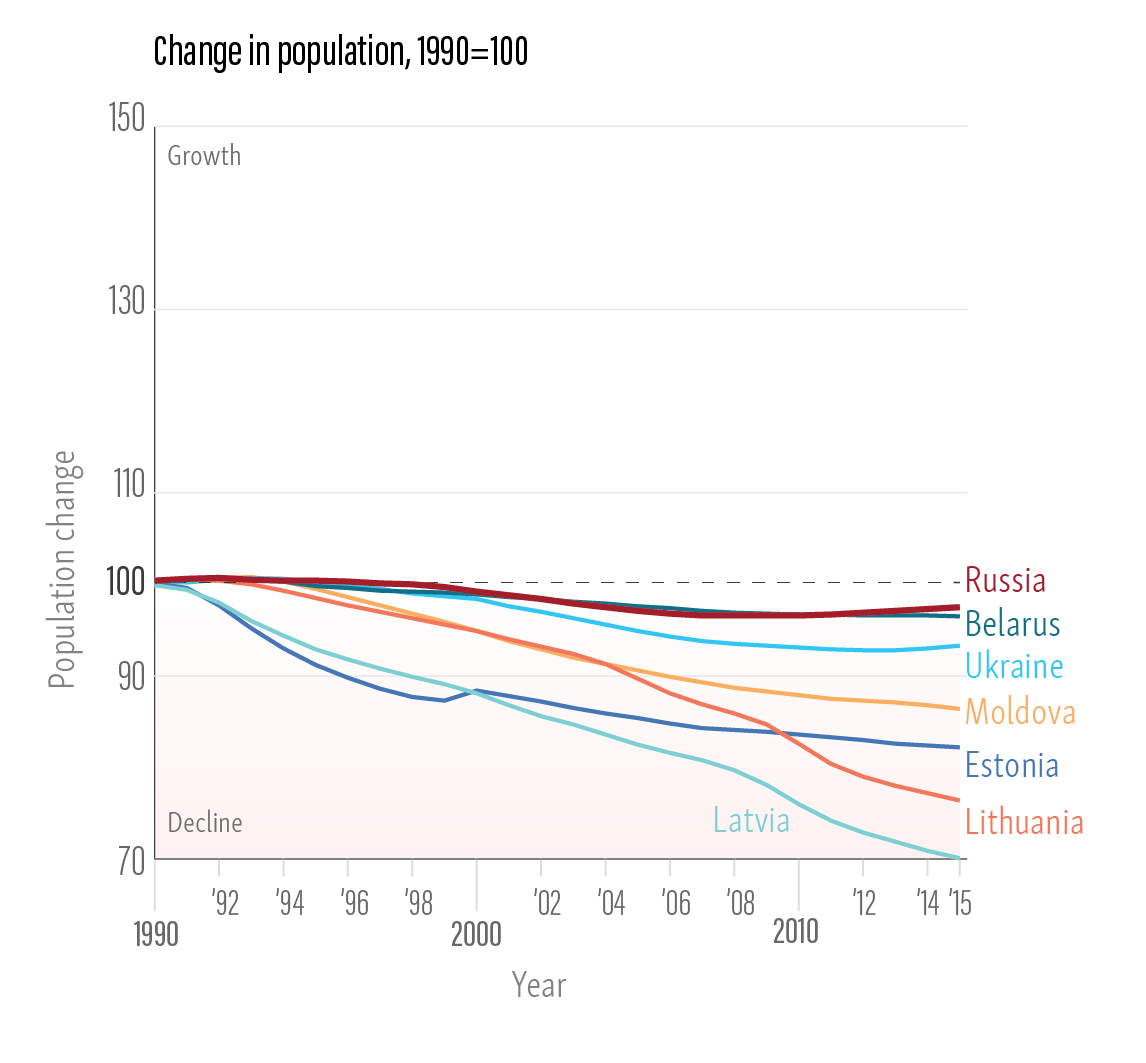
Population of Russian Federation 1952
Abstract This article shows how the Soviet government perceived higher birth rates in Central Asia as a threat to national identity and the stability of the USSR. The issue of demographic change was complex, and concerns about differential fertility between republics were not informed solely by prejudice.

The end of the Soviet Union's antialcohol campaign may explain a substantial share of Russia's
By 1959 there were a registered 209,035,000 people, over the 1941 population count of 196,716,000. In 1958-59, Soviet fertility stood at around 2.8 children per woman. [1] Population dynamics in the 1970-1980s[]

Countries With Large Russian Populations Business Insider
The figures issued reveal that on January 17 last, the population of the Soviet Union numbered 170,467,186, including 81,664,981 males and 88,802,205 females.

bne IntelliNews Russian population is moving west
Censuses in Ukraine Notes ^ The first full-scale census in the Soviet Union. ^ Initially set to take place in 1933, but was delayed multiple times due to Joseph Stalin 's policies of collectivization, forced famine and political repression which lowered the population drastically. The only one-day census in the Russian history.

Expert Looming ethnic conflicts in Russia will be ‘more devastating’ than in Europe Euromaidan
Twenty-five years after its disintegration, the combined population of the 15 former republics stands at just under 294 million. But by 2050, the combined population of former Soviet countries is.

Diverging Demographics
The Soviet Union was a federal socialist state that existed from 1922 to 1991, consisting of 15 socialist republics. The Soviet Union originated in the 1917 Russian Revolution, when radical leftist revolutionaries, the Bolsheviks, overthrew Czar Nicholas II and the centuries-old Romanov monarchy and a civil war followed.

Not Your Mother’s Russia The Washington Post
Soviet Union Participants: Armenia Belarus Estonia Georgia Kazakhstan Latvia Lithuania Moldova Russia Ukraine (Show more) Context: Cold War 1991 Soviet coup attempt Key People: Mikhail Gorbachev

Russia Orthodoxy, Paganism, Islam Britannica
The United Socialist Soviet Republic, or U.S.S.R., was made up of 15 republics: Armenia, Azerbaijan, Belarus, Estonia, Georgia, Kazakhstan, Kyrgyzstan, Latvia, Lithuania, Moldova, Russia,.

Depardieu quel est l'emploi du temps d'un ministre de la Culture de Mordovie? Slate.fr
Russian: Soyuz Sovetskikh Sotsialisticheskikh Respublik or Sovetsky Soyuz (Show more) Major Events: World War II Russian Provisional Government collapse of the Soviet Union

3.1 Introducing the Realm World Regional Geography People, Places and Globalization
For mid-1982 the population of the Soviet Union was estimated at 270 million. The country's current rate of natural increase (births minus deaths) is about 0.8% a year, higher than current rates of natural increase in the U.S. (0.7%) and in developed countries as a whole (0.6%). Net immigration plays no part in Soviet population growth, but.

Former Soviet Union Countries Population Growth (1981 2018) YouTube
The census found the total population to be 286,730,819 inhabitants. [1] In 1989, the Soviet Union ranked as the third most populous in the world, above the United States (with 248,709,873 inhabitants according to the 1990 census ), although it was well below China and India. Statistics

Ethnic Russians in former Soviet republics The Washington Post
v t e The Soviet Union, [r] officially the Union of Soviet Socialist Republics [s] ( USSR ), [t] was a transcontinental country that spanned much of Eurasia from 1922 to 1991.

Diverging Demographics
The Soviet Union (or the Union of Soviet Socialist Republics - USSR) was a giant single-party communist state formed by the federal union of 15 national republics. It existed from 1922 to 1991.

Did Russia just its 20year demographic crisis? The Washington Post
How did they deal with it? Later on, in the postwar USSR, the imbalance decreased significantly and by the end of the 1980s, population growth was already at a decent rate, albeit spasmodic. For.

This Chart Shows The Astounding Devastation Of World War II Business Insider
According to data from the 1989 Soviet census, the population of the USSR was made up of 70% East Slavs, 17% Turkic peoples, and less than 2% other ethnic groups. Alongside the atheist majority of 60%, there were sizable minorities of Russian Orthodox Christians (approximately 20%) and Muslims (approximately 15%). [citation needed] Population.

March 2015 Bodleian Map Room Blog
The last reliable population figure was that of the census of January 17, 1939, which showed a population of 170,500,000. Since that date, both before and after the war, there have been incorporated into the Soviet Union territories with a prewar population of about 24,000,000. For the postwar population of the enlarged territory of the U.S.S.R.